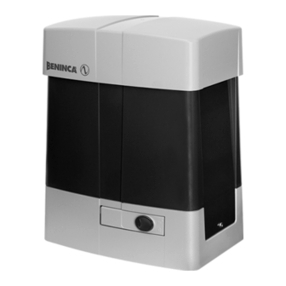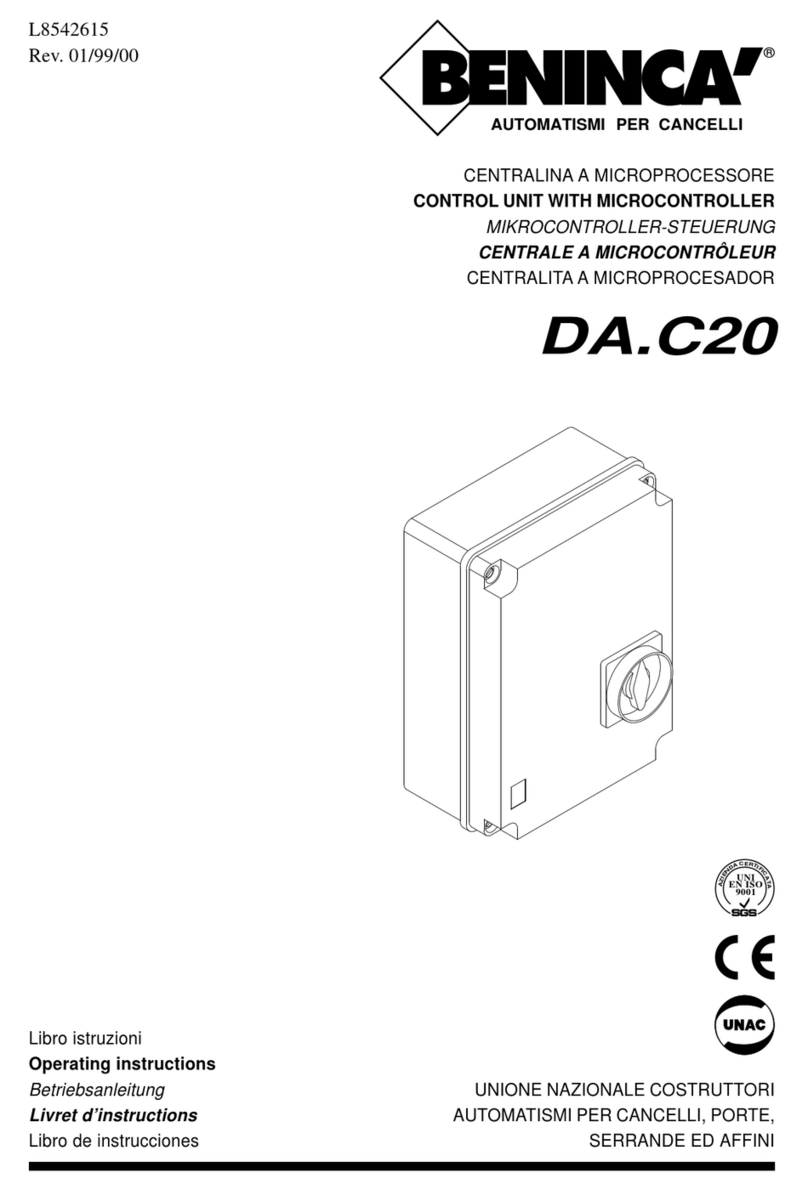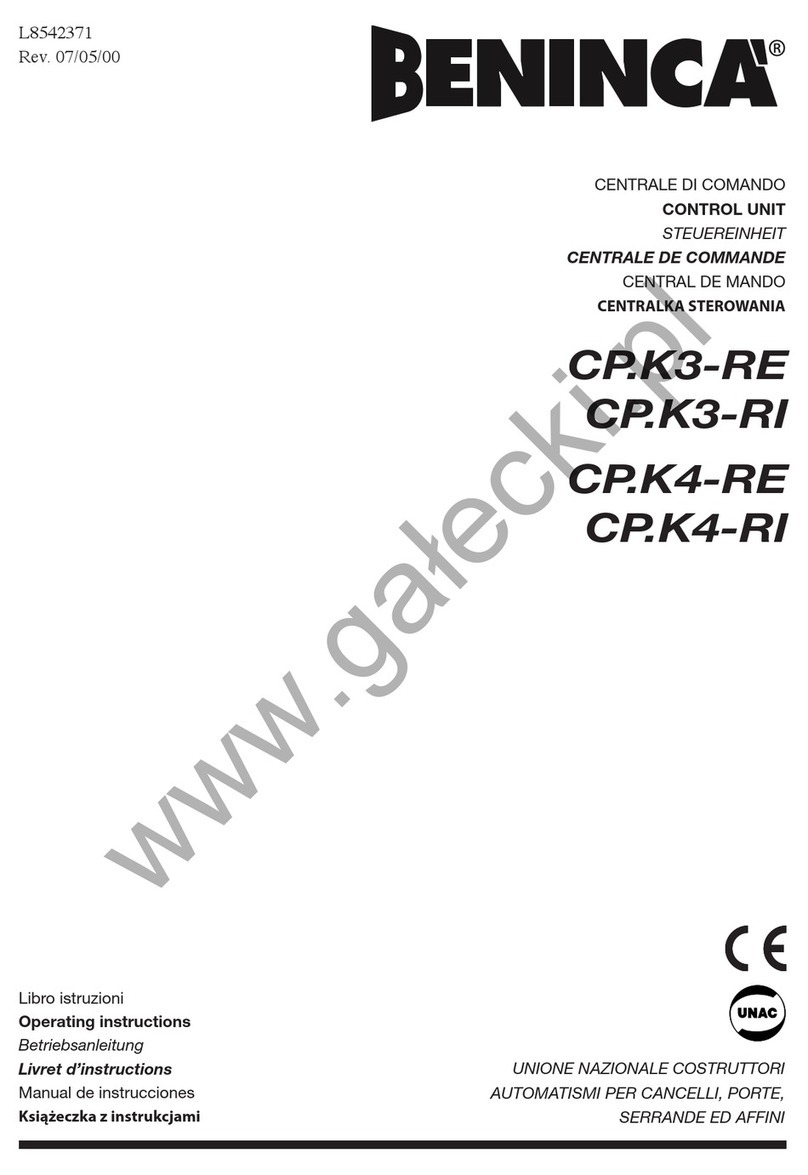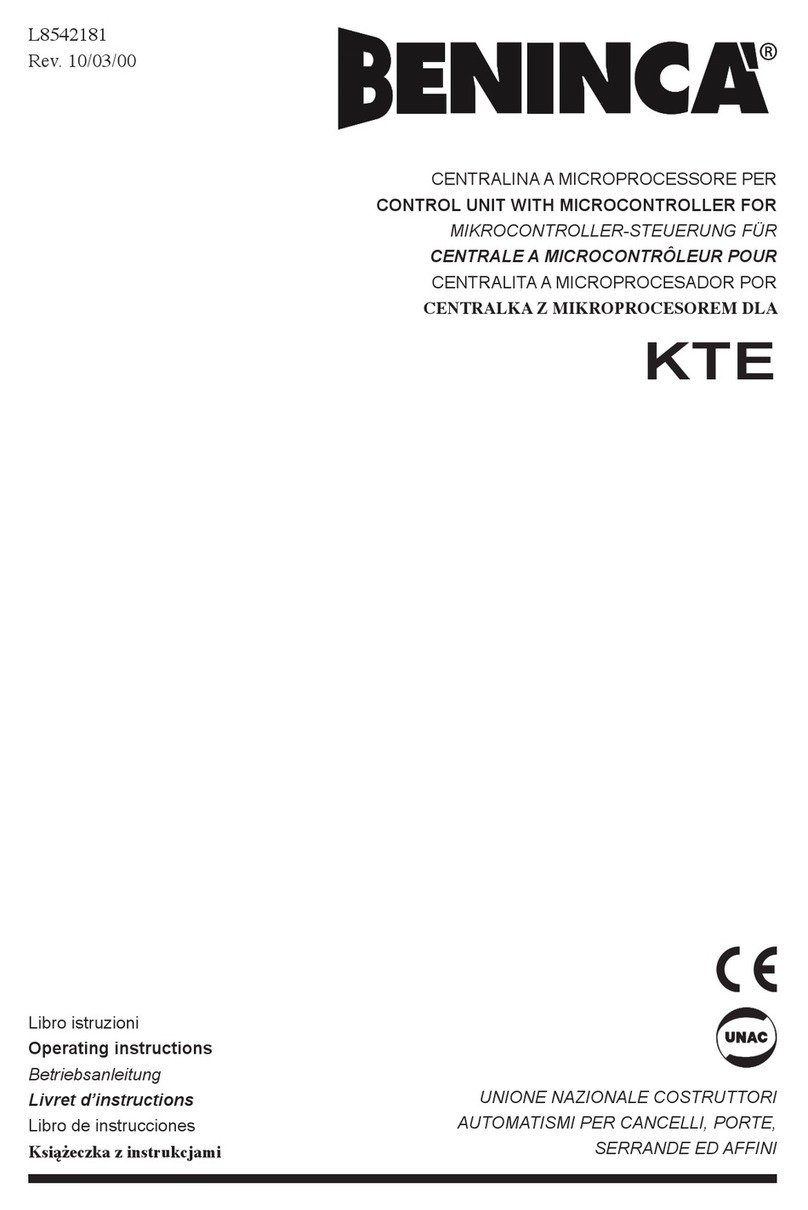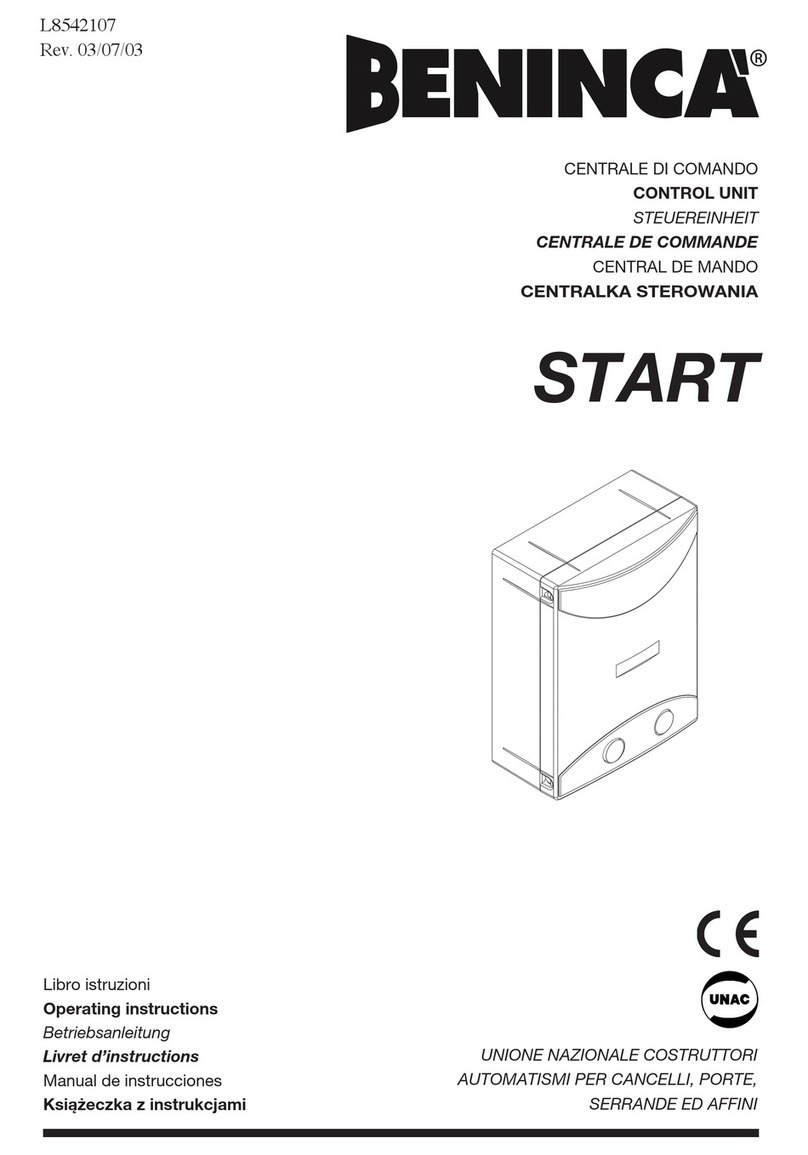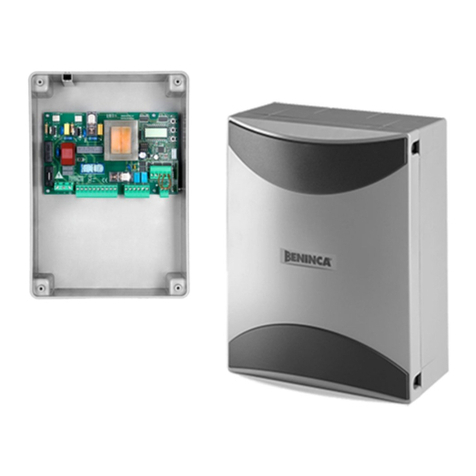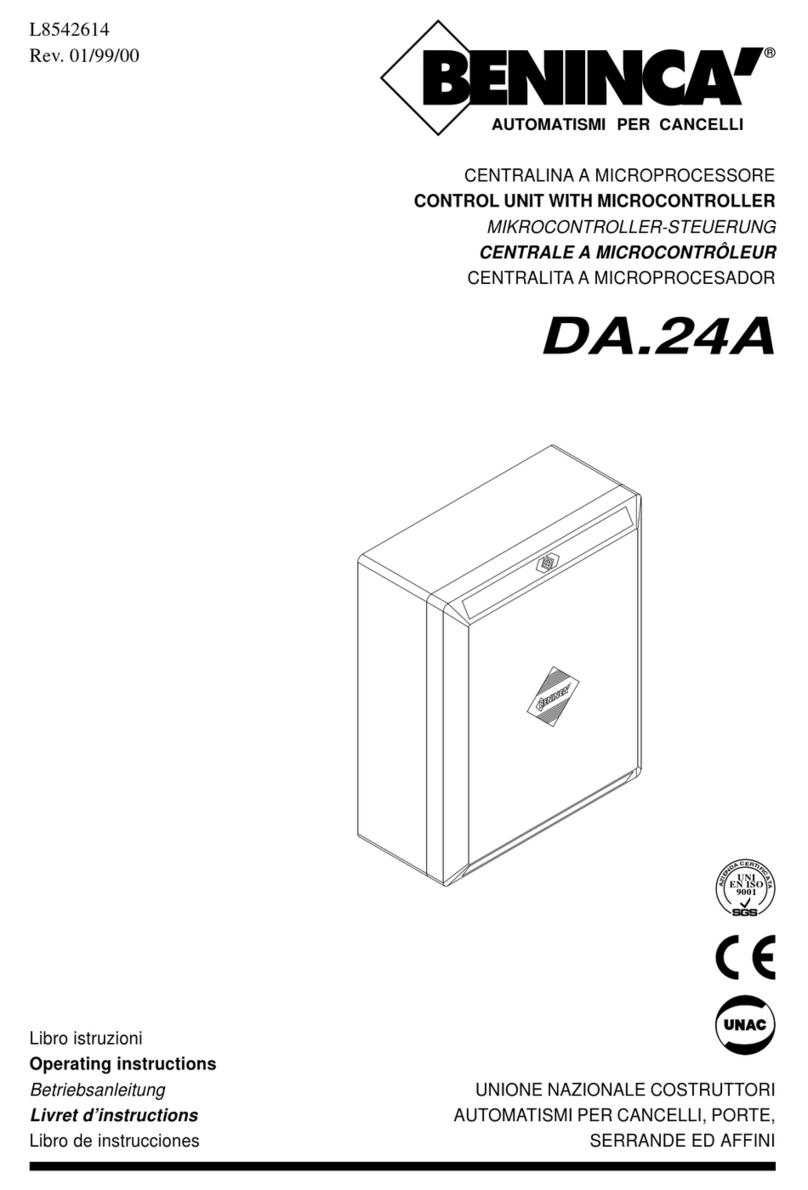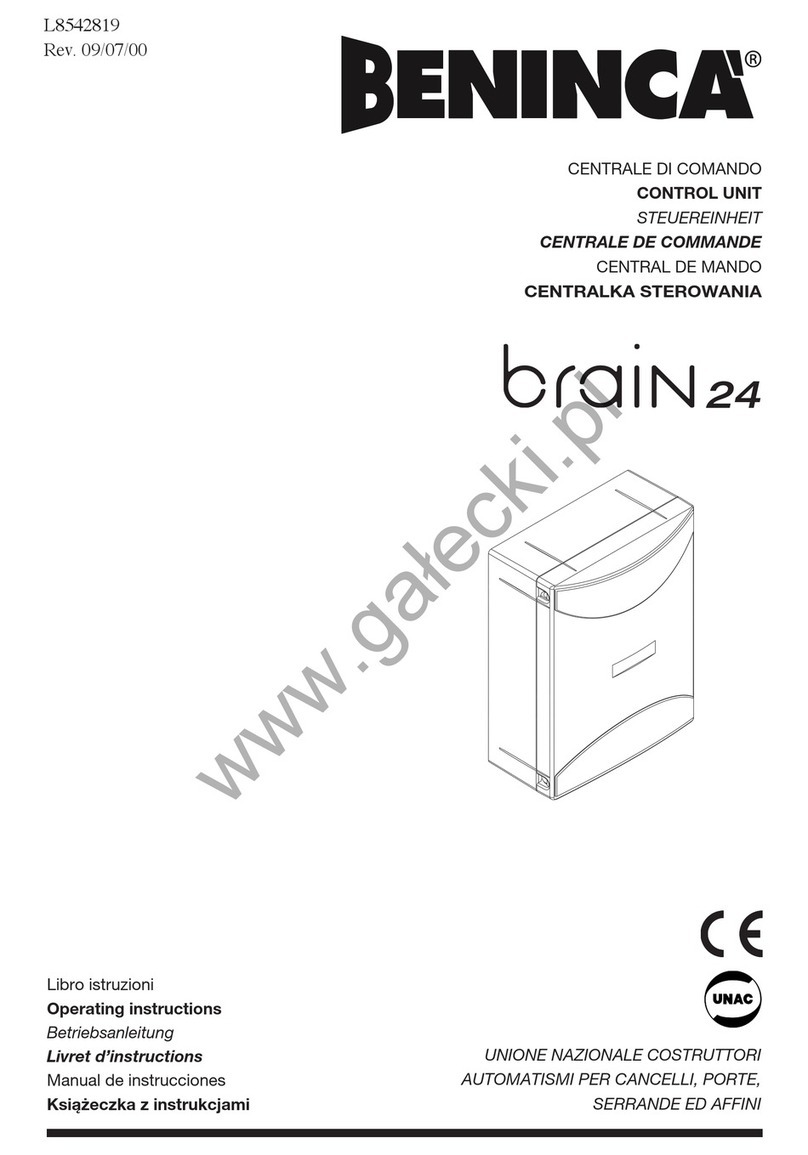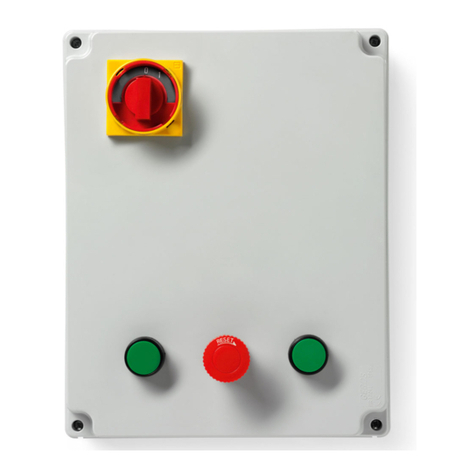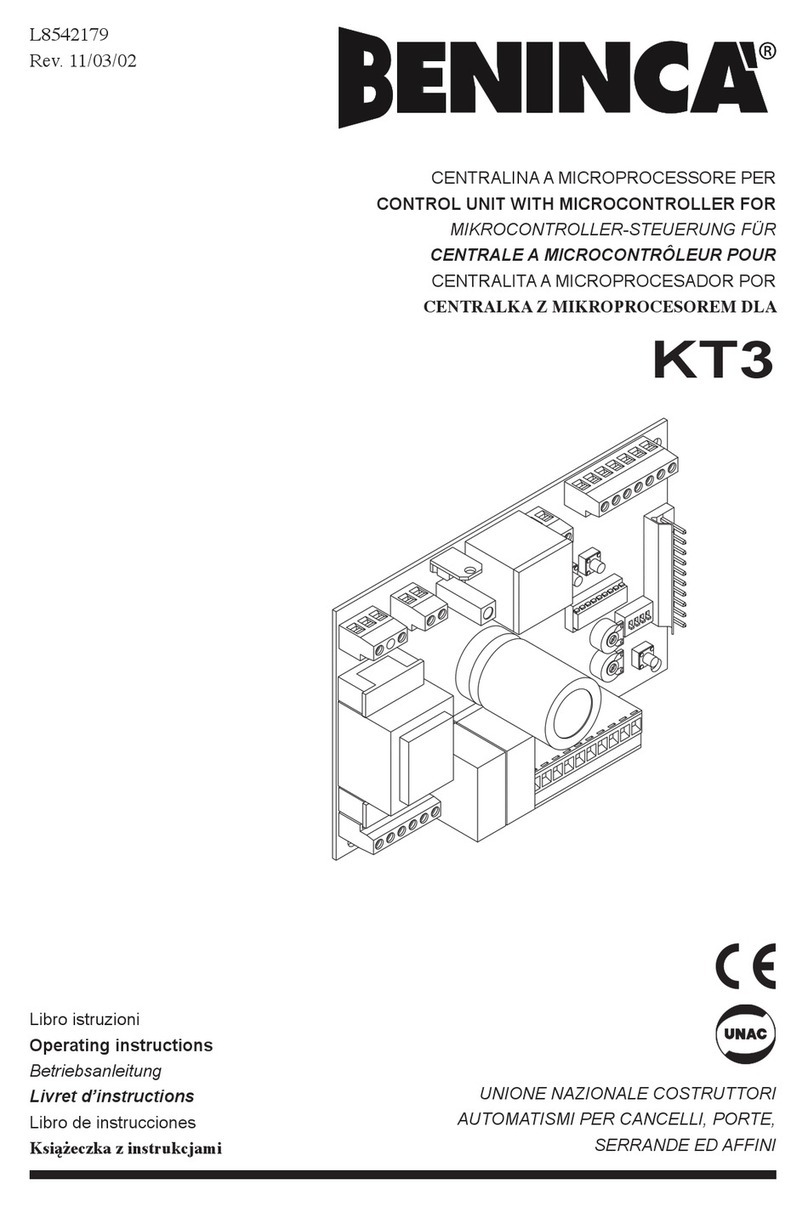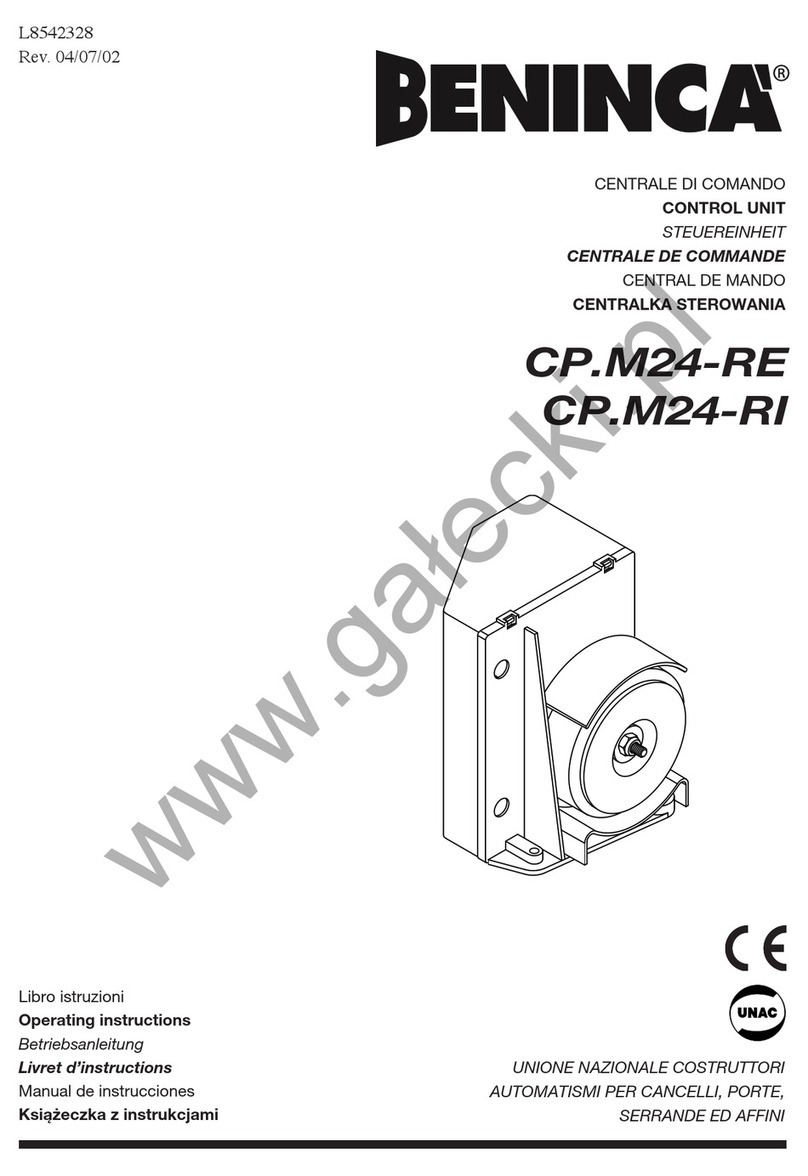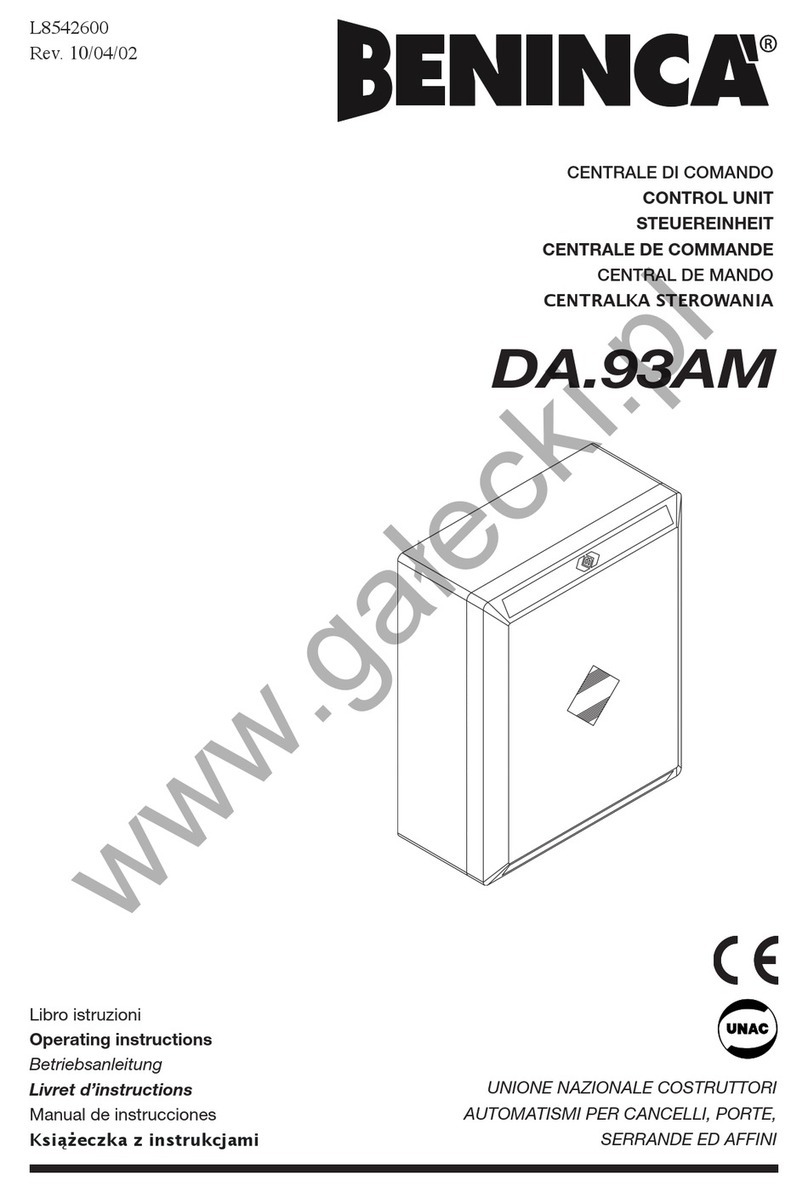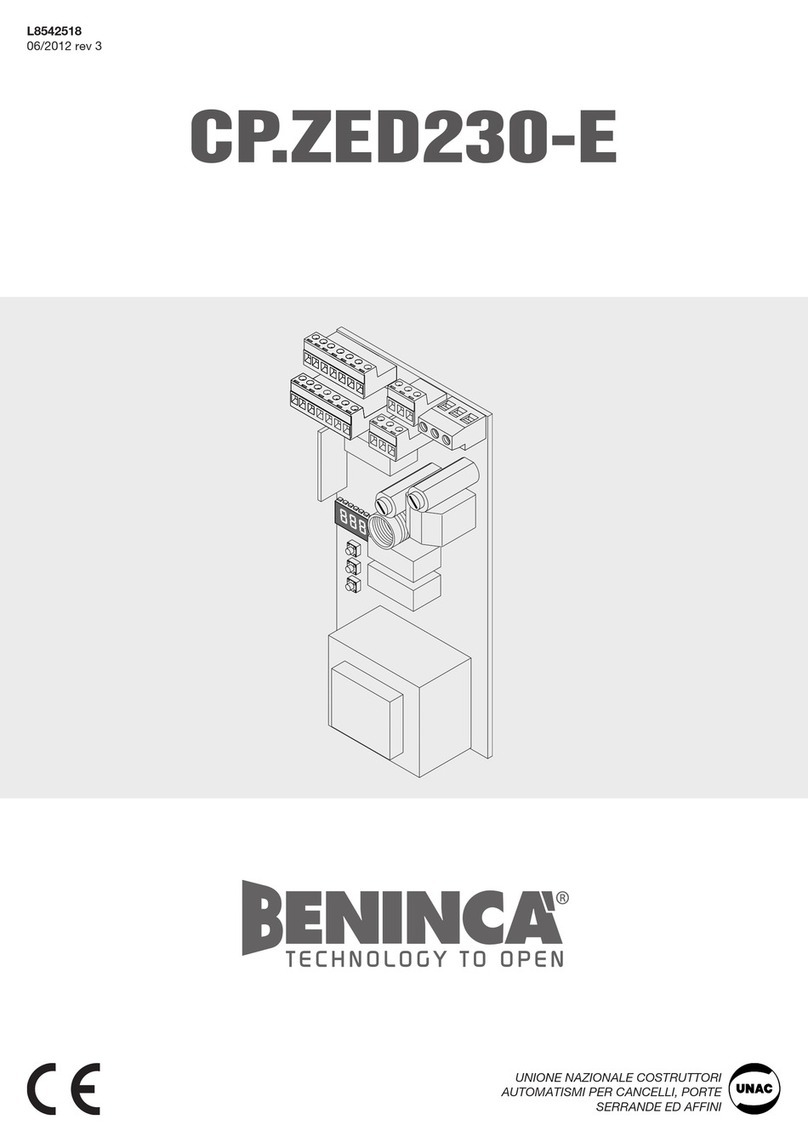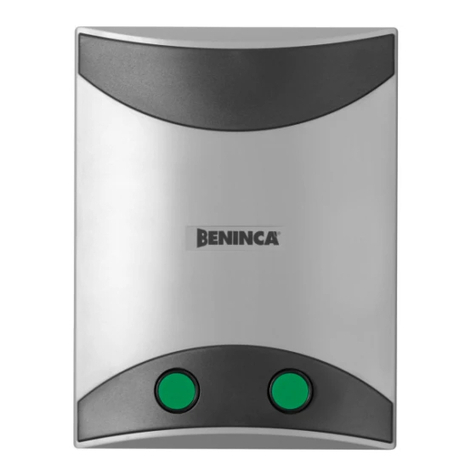
RI10KI Control unit with microcontroller
The control unit with microprocessor RI.10KI can be used to control motors featuring a power not
exceeding 750W.
GENERAL WARNINGS
a) The wire connections and the operating logic should be in compliance with regulations in force.
b) The cables featuring different voltage should be physically detached, or adequately insulated by
an additional insulation of at least 1 mm.
c) The cables should be further fastened in proximity to the terminals.
d) Check all connections before powering the unit.
e) Check that settings of the Dip-switches are the required ones.
f) When the unit is powered, the LED “POWER” must light on. In the negative, check the good
condition of fuses and the presence of 230Vac, 50Hz between terminals 1 and 2 (INPUT 230VAC
- follow phase/neutral).
g) All normally closed inputs, which are not in use, should be short-circuited with the relevant Dip-
Switch located near the connection terminal of the inputs.
h) If the rotation direction of the motor is inverted, it is sufcient to invert the wires “APRE” - “CHIUDE”
(OPEN - CLOSE) of the motor as well as the limit switches wires “FCA” - “FCC”.
Input/Output functions
Terminal
No.
Function Description
(1,2) Input, 230VAC Power supply of the control unit 230Vac, 50Hz (Phase: terminal 1,
Neutral: terminal 2).
(3,4,5) Output, Motor Respectively, Move(3), Move(4) and Common (5).
(6,7) LAMP To the ashing light at 230Vac
(8) CHIUDE Input, CLOSE push-button Normally Open (N.O.) contact
(9) APRE Input, OPEN push-button N.O. contact (it can be switched to “Pe-
destrian” input)
(10) P.P. Input, STEP-BY-STEP push-button
(11) STOP Input, STOP push-button Normally closed (N.C.) contact
(12) FTC Input, safety devices connection, N.C. terminal (e.g. photocells)
(13) FCA Input, opening limit switch. N.C. contact
(14) FCC Input, closing limit switch. N.C. contact
(15,16) +V Output, common for all inputs
(17) ASC Input, safety edge. Its activation causes the movement reversion for
1 second if the motor is in the closing phase*
(18) Input, common to
the safety edges
Input, common of safety edges. The safety edges MUST NOT BE
CONNECTED TO THE COMMON OF THE PUSH-BUTTONS
(19) ASA Input, safety edge. Its activation causes the movement reversion for
1 second if the motor is in the opening phase*
(20,21) SCA Open gate indicator light connection, 24 Vac/3W max.
(22,23) OUT 24VAC Output, auxiliary power supply, 24Vac (1A max.)
(24,25) Output,2nd chan-
nel
N.O. contact, controlled by the second channel of the remote
control
(26,27) Input, antenna Antenna connection for the receiving card of the remote control.
Shield= terminal 26
(28,29) Input, 24VAC Connection to the secondary of the transformer, 24V
(30,31) Capacitor Connection to the capacitor
(32,33) Output, 230VAC Connection to the primary of the transformer, 24V
RTX Connector to the receiving card of the remote control.
